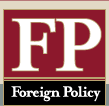
Foreign Policy
Spring 1999
Workers of the World, Now What?
By Kathleen Newland *
This abstract is adapted from an article appearing in the Spring 1999 issue of Foreign Policy.
While international capital, trade, and business feast on open markets, heightened efficiency, and vanishing barriers in the new global marketplace, labor is noticeably absent. Why has labor been left out, and how can it regain its rightful place at the table? The answers are part structural, part institutional, and entirely political.
Labor’s downward slide began in the 1970s, as multinational corporations moved production to the most advantageous locations-often those with lower labor costs. Recessions in the 1970s, falling wages in the 1980s and 1990s, and increased numbers of workers (from 1.3 billion in 1965 to 2.5 billion in 1995 worldwide) further weakened labor’s position. Today, the costs of financial crises-growing poverty, shredded safety nets, and a higher cost of living-are borne mostly by working men and women. Clearly, a better balance needs to be struck between pursuing the gains to be had from globalization and protecting against its hazards.
In recent years, the world of work has changed enormously, but organized labor has been slow to adapt. Most of the growth in the job market is taking place outside the established union base of stable, full-time, blue-collar manufacturing work. And although labor mobility at both the high and low ends of the job market has increased, it still pales in comparison with the almost frictionless movement of capital across international borders. Some labor unions also suffer from the perception that they are just special- interest groups that defend the privileges and status of their members. Unions tend to benefit when they seek to represent the concerns of working people in general against the special interests of capital. But broad social representation is far easier to achieve at the national level than at the international one.
Meanwhile, in the last two decades, government deregulation and high debt have increased governments’ reliance on international financial markets, which shy away from policies that unions advocate: full employment, high growth, and a tendency to lower interest rates and increase public spending when employment rates flag. The markets have instead favored neoliberal reforms such as tighter fiscal controls, stabilization policies that include wage freezes, and liberal trade policies, which have all spelled trouble for labor.
The one international organization charged with promoting the interests of workers, the International Labour Organization (ILO), has been all but invisible in the debate on globalization. In today’s complex environment, however, it may be unrealistic to expect a single institution to represent the concerns of all workers. Alliances between multiple institutions-labor unions, governments, international organizations, activist lawyers, and a range of nongovernmental organizations (NGOs), including churches, media organizations, and consumer groups-may be their best chance.
Although the ILO has traditionally resisted such alliances, it has recently displayed a greater openness to coalition building. The International Program on the Elimination of Child Labor, which has made progress toward eradicating child labor in industries such as Pakistan’s soccer ball manufacturing, is ILO-based but involves many other international organizations, businesses, and NGOs and receives support from several governments.
Organized labor must thrive for the international economy to thrive. Governments find themselves trying to navigate between the financial markets-which will punish them if they do not cut wages, public spending, and job protection-and their own citizens, who will punish them if they do. But citizens may tolerate harsh economic reforms if they feel that their interests have been taken into account in devising them, and if the reforms themselves are perceived as fair and effective. A strong labor movement can play an important role in building that kind of public confidence and can provide channels through which conflict over reforms can be addressed. And new center-left governments in Britain, Canada, France, Germany, and Italy, if not entirely at one with organized labor, do seem to recognize that those left behind by globalization pose a threat to open markets and liberal institutions; at the very least, these governments are not openly hostile to labor’s interests.
If labor hopes to experience a true renaissance in the brave new world of globalization, it cannot model itself on its past. In the next century, unions will not work alone but rather with allies in human rights organizations and civil society, with progressively minded politicians, with international organizations, and with companies that have learned that they can benefit from a socially responsible labor policy. Organized labor’s role must be to forge-and in some cases to lead-alliances that empower workers to take advantage of flexible labor markets, ensure labor is not exploited in the name of greater production efficiency, and bring previously unrepresented workers into the social compact.
Further Reading
Richard Freeman’s “Are Your Wages Set in Beijing?” (Journal of Economic Perspectives, Summer 1995)
Freeman and David Blanchflower’s “Unionism in the United States and Other Advanced OECD Countries” (Industrial Relations, Winter 1992)
Freeman and Morris Kleiner’s “The Impact of Unionization on Wages and Working Conditions” (Journal of Labor Economics, January 1990)
International Labour Organization (ILO)’s World Employment Report 1998–99 (Geneva: International Labour Office, 1998)
ILO ’s World Labour Report 1997–98: Industrial relations, democracy, and social stability (Geneva: International Labour Office, 1997)
Brian Langille’s “Eight ways to think about international labour standards” (Journal of World Trade, August 1997)
World Bank’s World Development Report 1995: Workers in an Integrating World (New York: Oxford University Press, 1995)
Endnotes
*: Kathleen Newland is a senior associate at the Carnegie Endowment for International Peace and codirector of its International Migration Policy Program. Back.